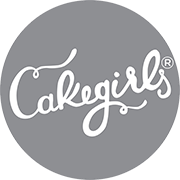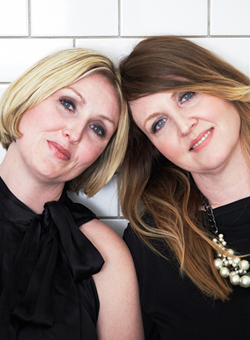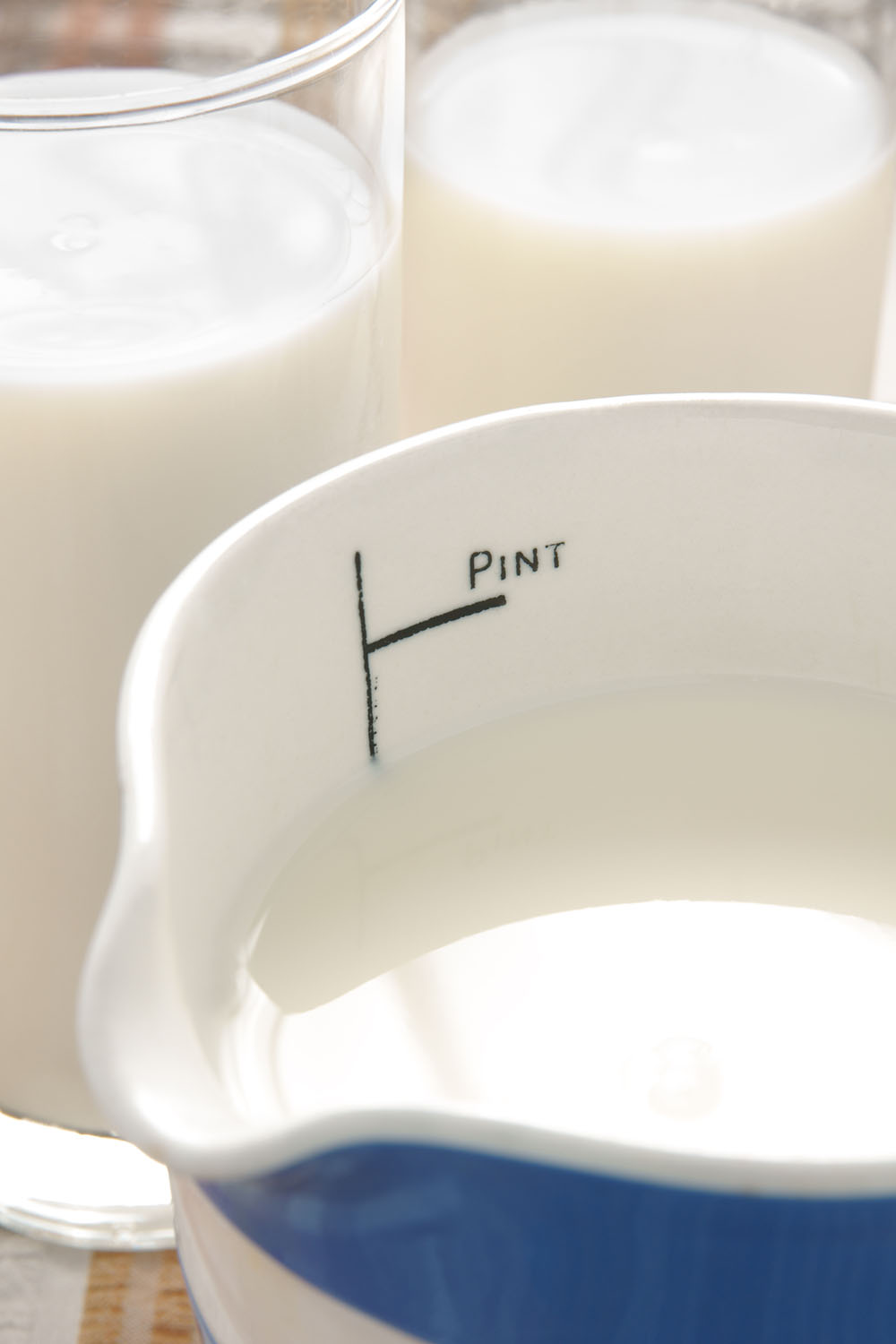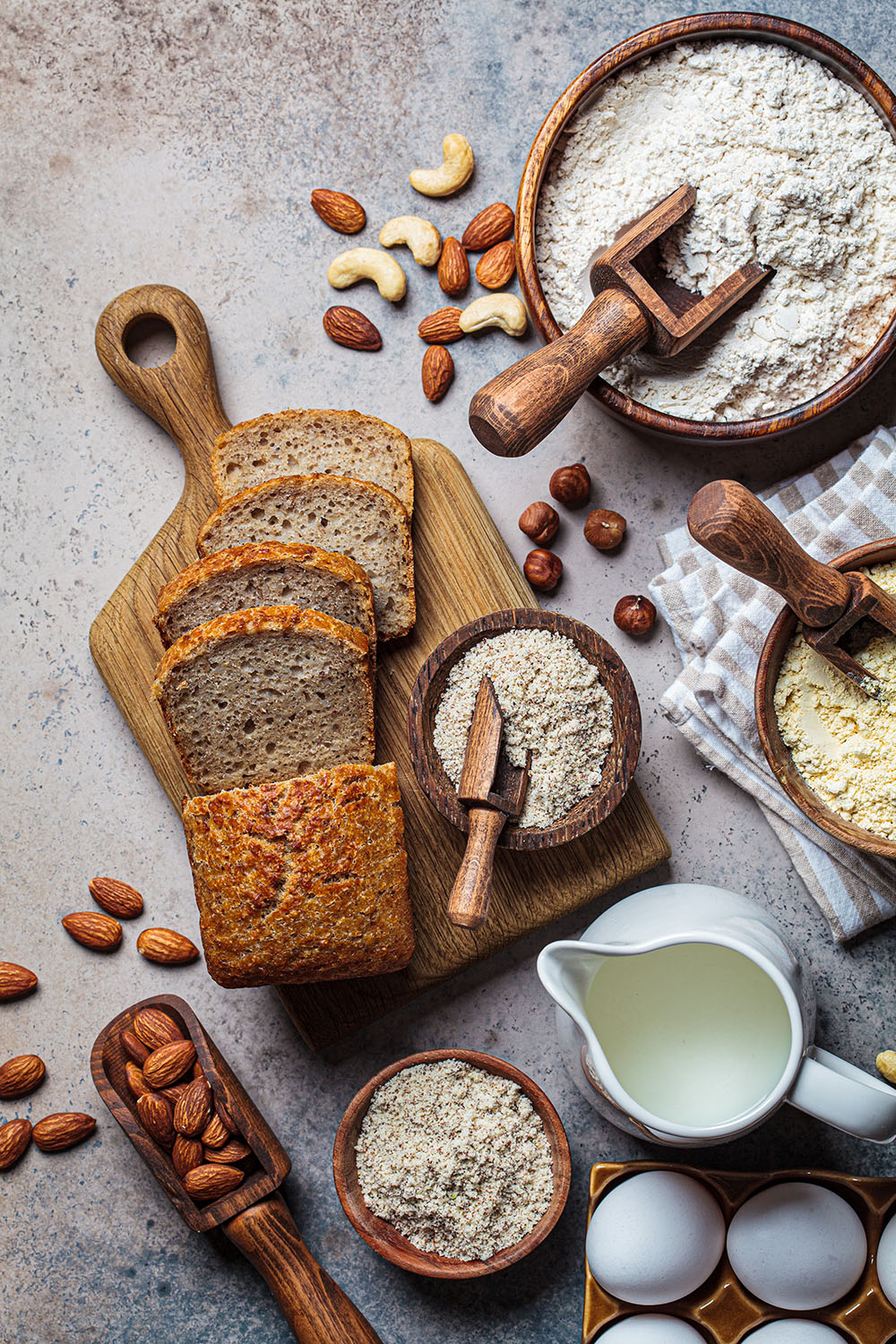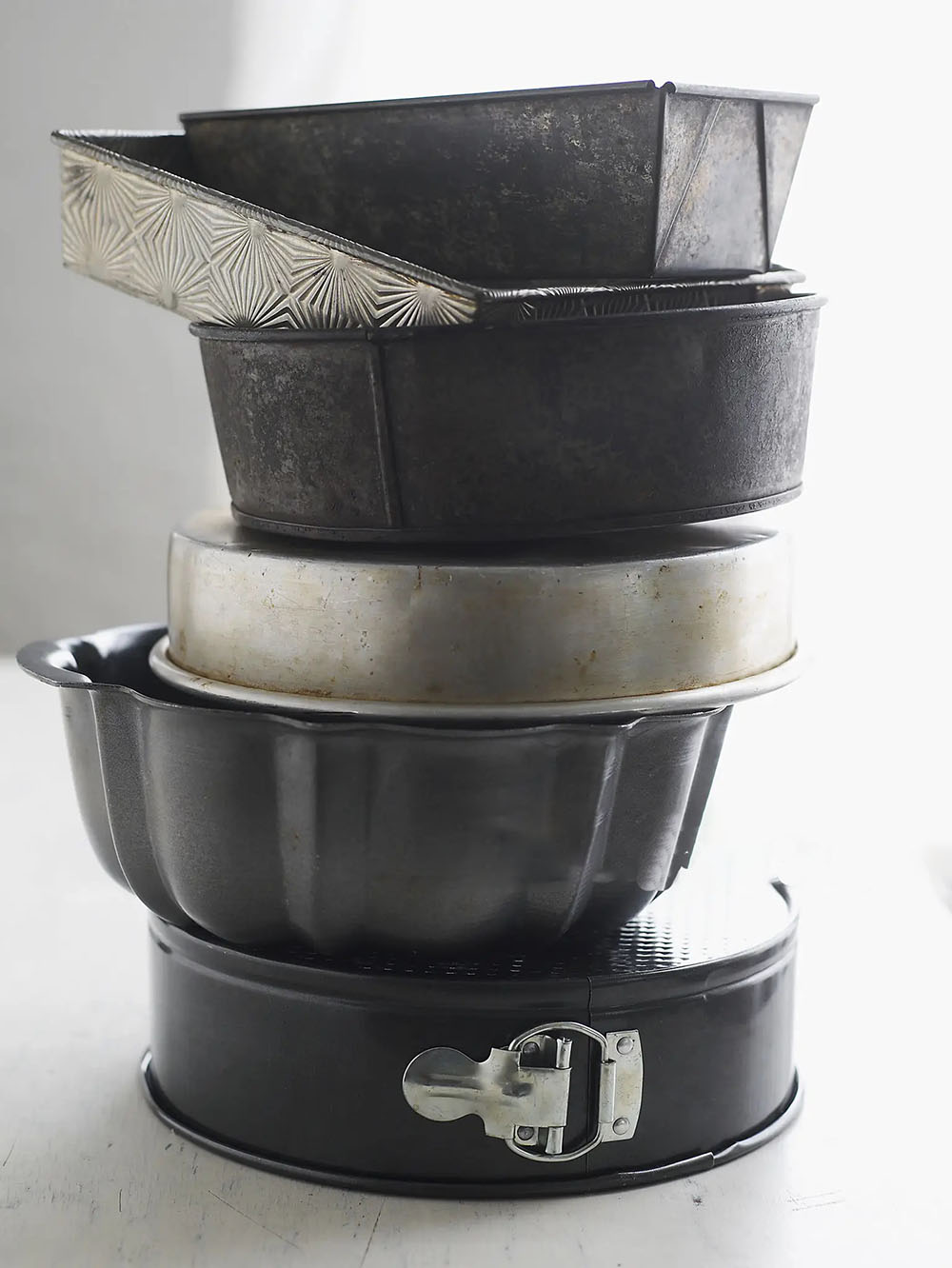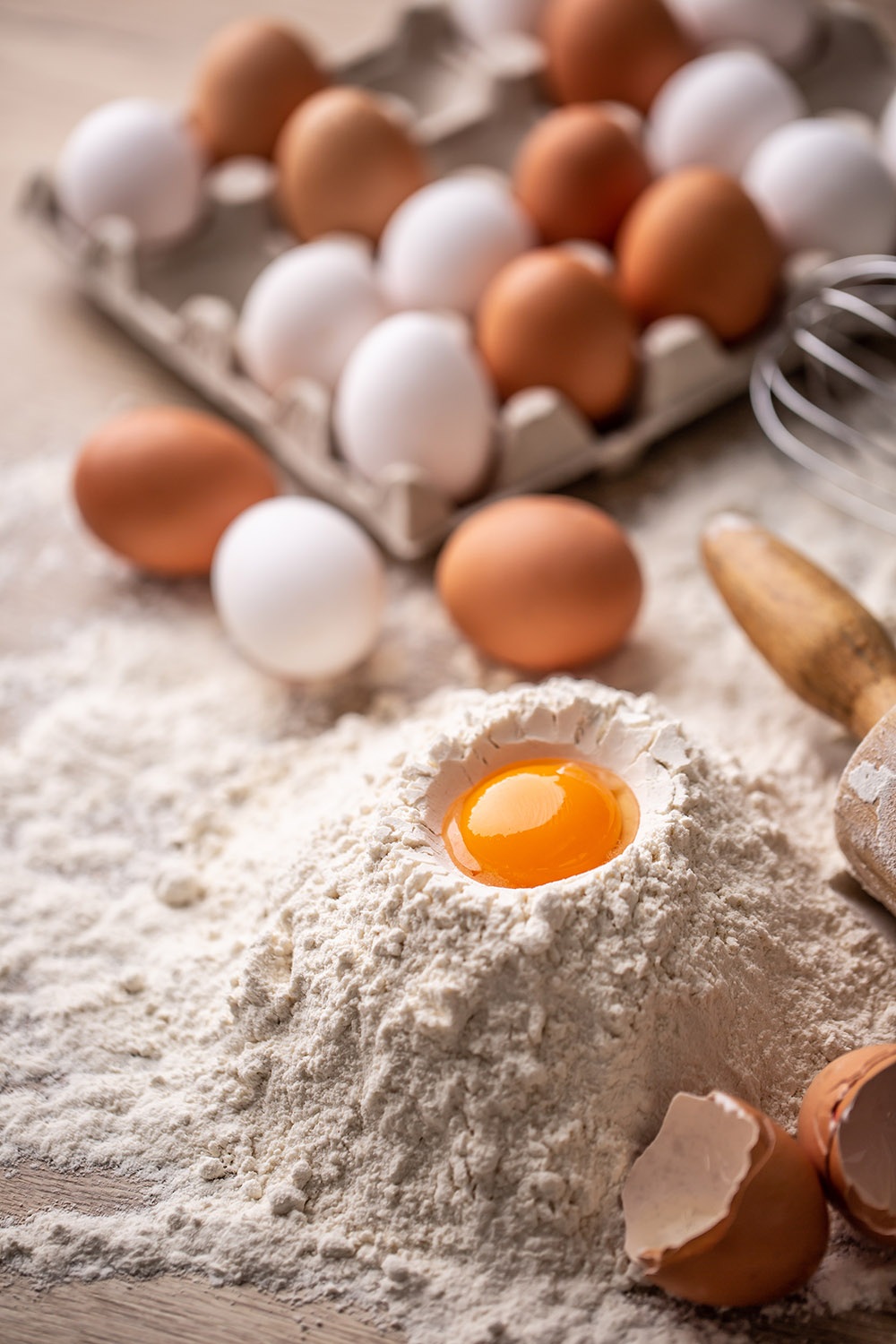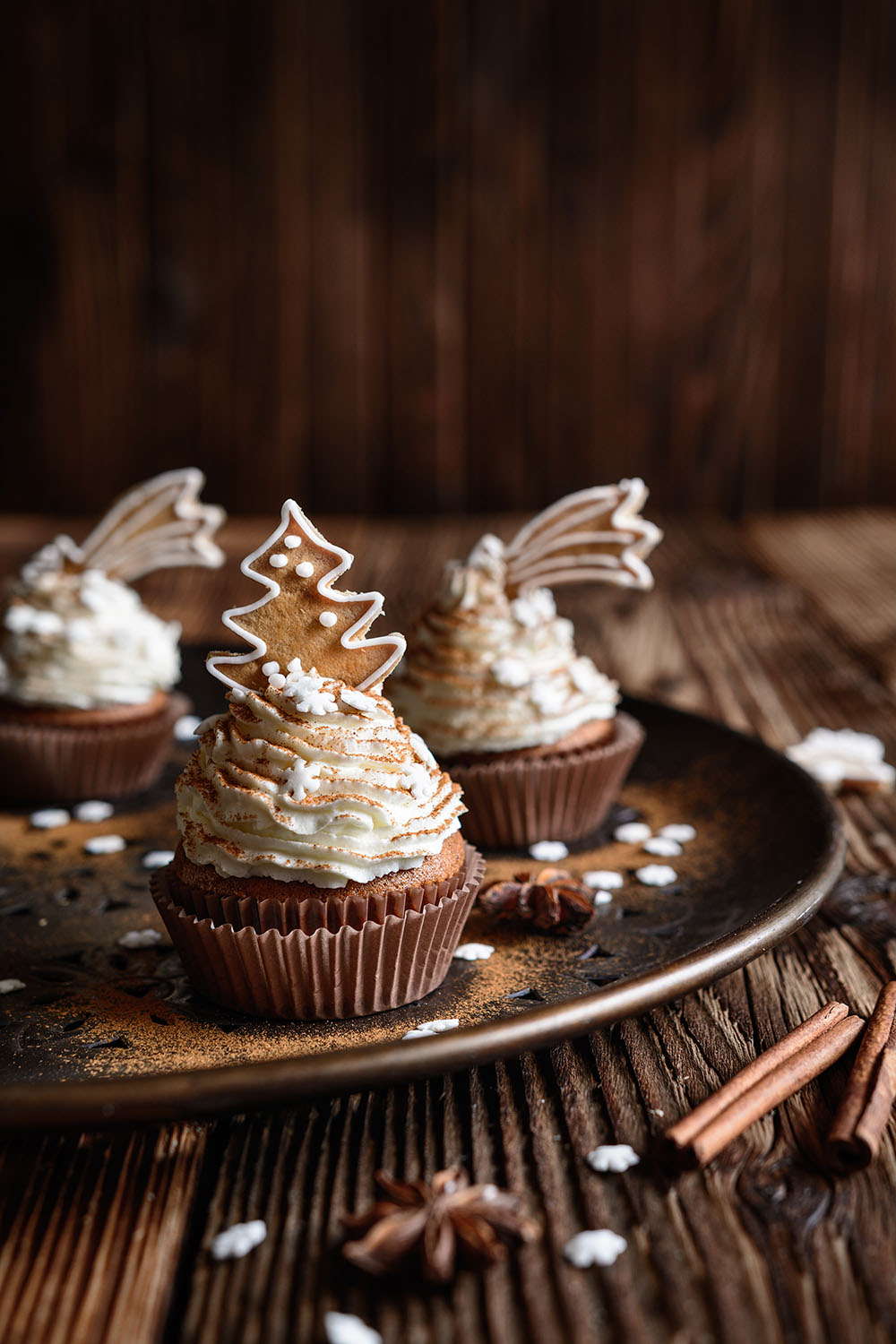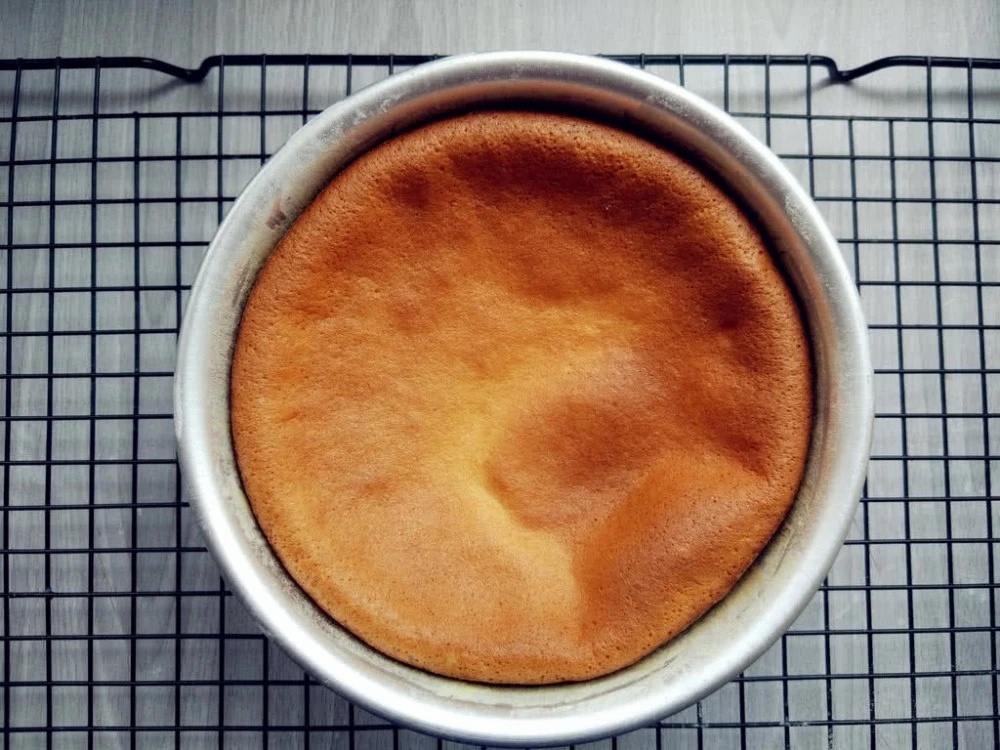At first glance, baking powder and yeast look pretty the same, don’t they? They’re powdery, and both play a role in making our baked goods rise. But are they really as similar as they seem?
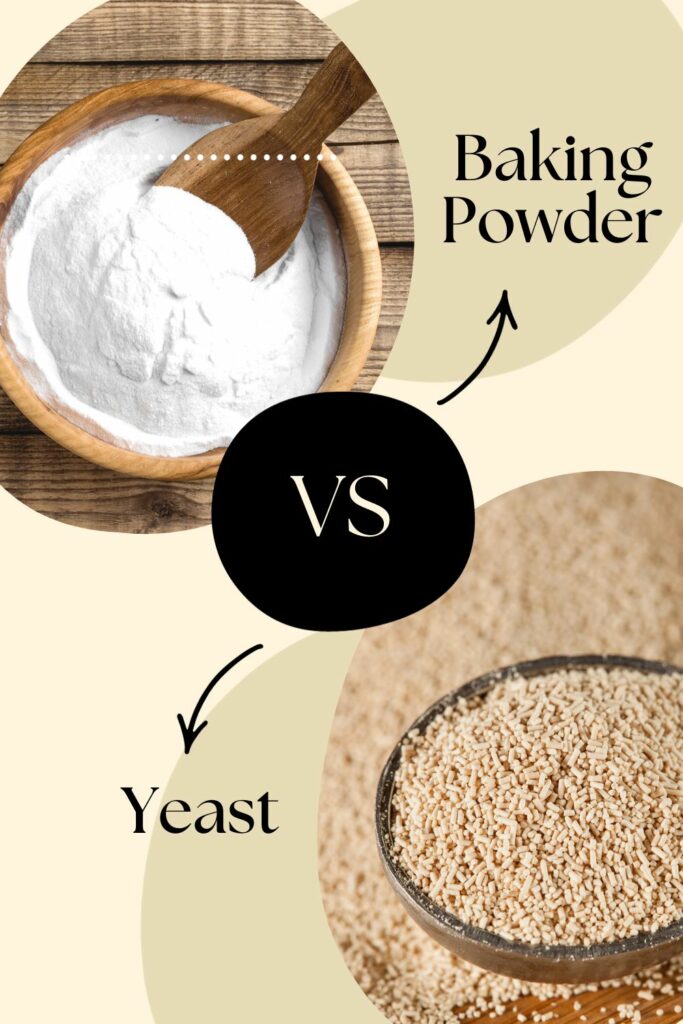
As you’ll soon discover, there’s more to each of these leavening agents than meets the eye. Stick with me as we compare baking powder with yeast and see if they can be swapped one for one.
What is Baking Powder?
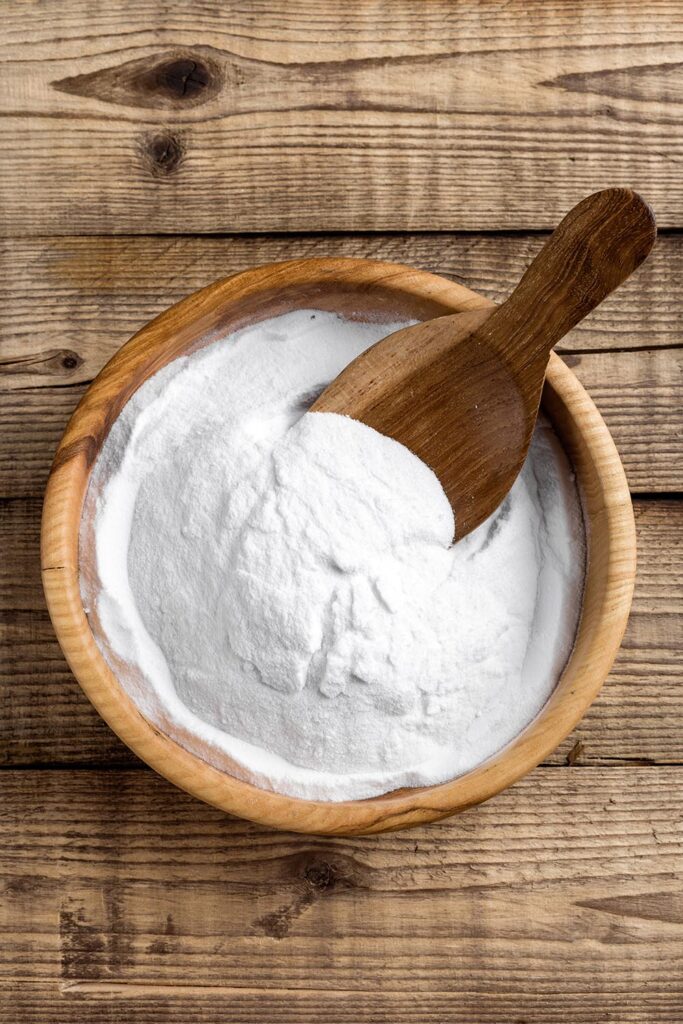
In essence, baking powder is a chemical leavening agent. If you’re wondering what that means, let me break it down for you.
When you mix this cake flour with a wet ingredient (like water or buttermilk), the acid and baking soda have a little party. They react together, releasing a tsunami of tiny bubbles of carbon dioxide gas.
These bubbles get trapped in your batter or dough like little air pockets. They cause it to expand and rise like a happy hot air balloon. This fast-acting lift helps make these baked goods fluffy with minimal work. For that, I’m always thankful.
What is Yeast?
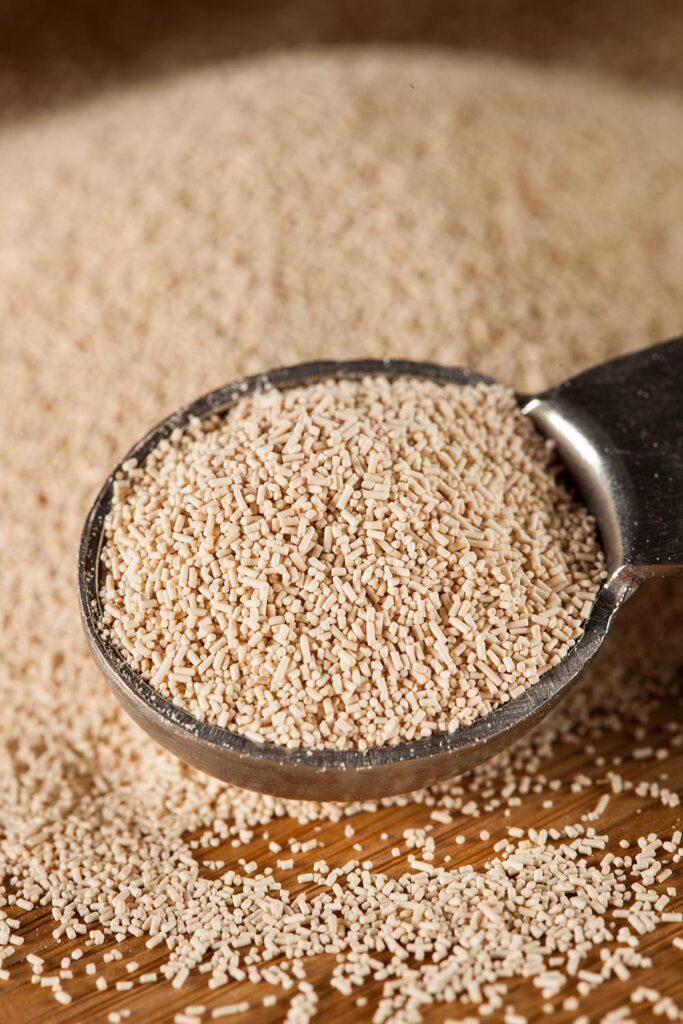
This is another staple in my inventory. And in many ways, it produces similar results as baking powder.
I’ve always found the way yeast works fascinating. It is a tiny living organism (a type of fungus, actually). When you mix them with flour and water, they start feasting on the sugars in the flour.
This process is fermentation, and it produces carbon dioxide, gas, and alcohol. It’s this carbon dioxide that gets trapped in the dough, causing it to rise slowly and develop flavor.
Key Differences Between Yeast and Baking Powder
While baking powder produces a rapid, short-lived rise through a chemical reaction, yeast creates a slow, sustained rise due to fermentation. Baking powder will not affect the taste of your dough, but yeast introduces a fermented, tangy note to the mix.
Reaction Time
Baking powder starts and finishes the chemical reaction the second you mix it into a batter. It releases carbon dioxide fast, so your batters can go right into the oven.
That is why it is great for a quick batch of pancakes on a Sunday morning. However, if you mix it too early, you might end up with a flat, dense cake. Believe me when I say I’ve had my fair share of these mishaps in my early years.
Yeast, on the other hand, needs time to wake up, eat sugars, and pump out air bubbles slowly. You’ll need more patience with yeast-based recipes. The dough will rise over hours, often even overnight, and it will rise further in the oven.
Taste
Yeast can add subtle fermented flavors if you let the bread dough proof long enough. Fresh yeast is pretty bland, but once you bloom it, it smells like fresh-baked bread – a scent that my customers always love.
Meanwhile, baking powder is fairly neutral in flavor. It doesn’t affect flavor much unless you overdo it. In those cases, it can leave a bitter, soda-like taste.
Uses
Yeast is my go-to for bread, pizza dough, and sweet rolls like cinnamon buns. These items benefit from its slow fermentation, which adds depth to both flavor and texture.
On the other hand, baking powder should be your choice for quick breads, cookies, and cakes. They don’t need the complex flavors that fermentation brings, so the quick action of baking powder is perfect.
Can I Use Baking Powder Instead of Yeast?
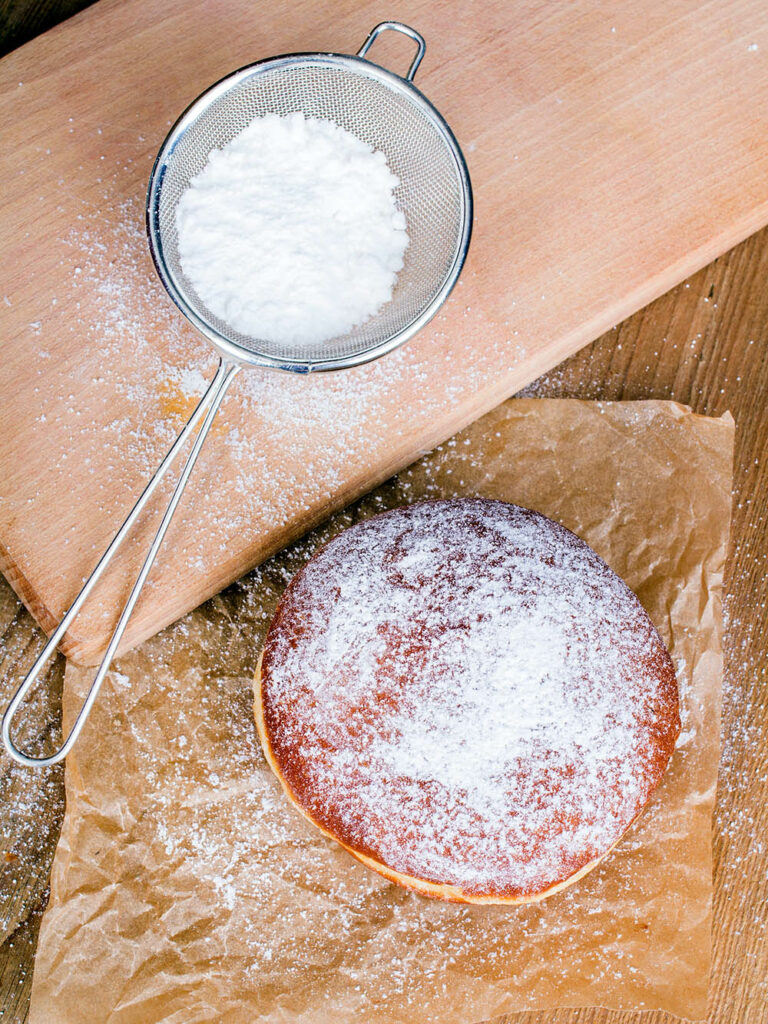
Let’s get straight to the point. Don’t use those two things interchangeably unless you don’t want your baking to turn out as intended.
Both these ingredients are included in different types of recipes for good reasons. Their compositions and the ways they work are like night and day, remember? They’re so different that swapping them can affect your finished product in ways you can’t imagine.
Frequently Asked Questions
Is Yeast the Same as Baking Powder?
No, absolutely not. One is a chemical leavening agent that reacts quickly to produce gas bubbles, while another is a living organism that requires time to ferment and rise.
Do You Need Baking Powder or Yeast for Pizza?
For pizza, you typically need yeast. It gives the dough its signature chewy texture and complex flavor through fermentation. Still, there are some no-yeast pizza recipes you can try.
Why Is Yeast Not Used in Cakes?
Cakes don’t benefit from the long fermentation process of yeast, and the extra moisture can make them dense. In fact, it can overwhelm the delicate taste profile of most cakes.
How Do You Substitute for Baking Powder or Yeast?
To replace baking powder in the leavening of baking products, you can use a mix of cream of tartar and baking soda. Try combining baking soda with an acid like lemon juice or buttermilk for yeast. Just remember, these workarounds often alter the flavor and texture of your recipe.
See more:
Conclusion
Using the right leavening agent in the baking process makes all the difference. Baking powder and yeast affect the flavor, texture, and rise of baked goods in distinct ways. Whether you’re whipping up a quick batch of scones or patiently crafting a batch of artisan bread, remember to stick to whatever the recipe needs.
